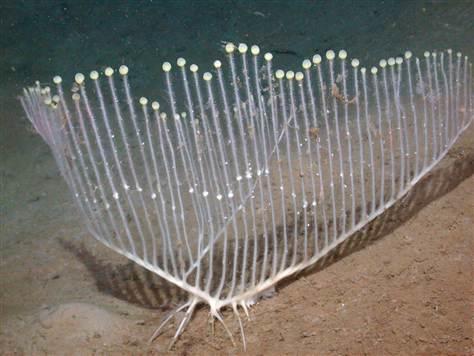
Section Branding
Header Content
New-to-You Sea Sponge
Primary Content

A new sea sponge was originally discovered off the California coast back in 2000 with an unmanned exploration vehicle. Scientists have since been back to further investigate the creature, its habitat and habits. It has been dubbed "harp sponge," or Chondrocladia lyra, because its branches resemble strings on a lyre.
At a depth of about 2 miles from the surface, the harp sponge doesn't get much sunlight, so it isn't making its own food with photosynthesis. This sponge, unlike most, is carnivorous. It's a meat-eater. Specifically, it captures small crustaceans that are swept into it by ocean currents. The crustaceans become ensnared on the barb-like structures of the sponge's branches and are then covered by a membrane that assists the sponge with digestion.
Lonny Lundsten, an invertebrate biologist at the research institute and one of the first to see the harp sponge, says "We've seen only 1 percent of Monterey Bay and it's still one of the most well-studied regions of Earth in deep water," he said. "I can look out over the waters from MBARI and imagine thousands of species out there yet to be discovered."
Do you have students interested in biology, veterinary science, or marine biology?





